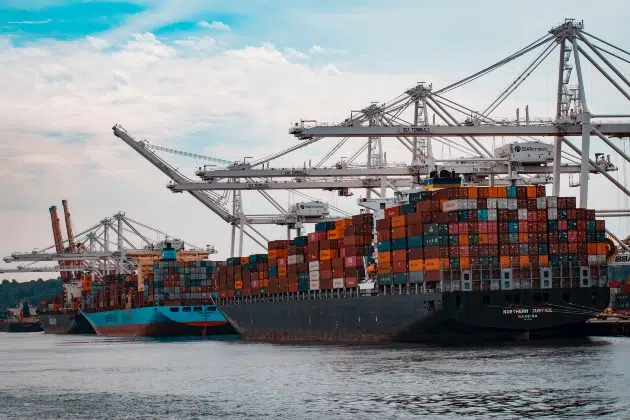(KNSI) – A day after President Donald Trump announced sweeping tariffs, economists are still trying to determine their impact.
St. Cloud State University’s King Banaian says the scope of the trade restrictions raised eyebrows. “I think the magnitude was surprising. We thought that reciprocal tariffs or blanket tariffs would be put in place. We didn’t expect that they would put both of them on at the same time. But that’s, in fact, what happened.”
Banaian notes the possibility that the tariffs proposed may be more of a negotiating tactic than anything else. If they go into effect as revealed Wednesday, they would be at the highest level since the early 1900s. Economists believe the Smoot-Hawley tariffs played a significant role in the Great Depression and are generally in favor of lower rates, or free trade, rather than protectionism.
That isn’t to say tariffs are always a negative. Banaian says the philosophy of reducing the trade deficit through tariffs while also lowering the need for deficit financing by slashing government spending and passing supply-side tax cuts that boost growth is possible, but it’s hard to thread the needle successfully.
“That’s their model. That’s the mindset they’re going with. As a theory, it can hold together. It could work. The problem is, the stuff you’re doing right now on tariffs can only work to the extent you want it to work if you can do the other things too.”
Banaian points out we’re more dependent on trade and foreign goods today than when tariffs were a staple of our economic policy in the 1800s and early 20th century.
There’s a second cause for concern in the form of inflation. He stresses all evidence from the past shows more tariffs mean higher prices, and we aren’t in a good position to weather that right now. “I now wonder if the impact of the tariffs actually gets the [inflation] number up to 3%. If it gets to 3%, I expect that the Federal Reserve is actually going to try to push to raise [interest] rates, rather than lower rates.”
Higher borrowing costs and prices would be partially offset by a return to work for demographics hit hard by globalization. From 2013 to 2023, the percent of men 16 years and older in the labor force fell by almost 4%. Over the past 50 years, the drop has been closer to 10%. For that reason, several labor unions are supporting the tariff plan.
Goldman Sachs recently raised its recession risk estimate to 35%. Banaian says that seems reasonable, but there is always the risk of political factors playing a role. Banaian believes it is almost impossible today to get economic data from a purely nonpartisan lens, and the tariffs are a Trump idea. He says even with consumer sentiment numbers, he now throws out responses from self-identified Republicans and Democrats and only uses independents.
All major stock indices were down sharply on Thursday after Trump’s tariff presentation, which was held at the White House Rose Garden after the markets closed on Wednesday.
___
Copyright 2025 Leighton Media. All rights reserved. This material may not be broadcast, published, redistributed, or rewritten, in any way without consent.







